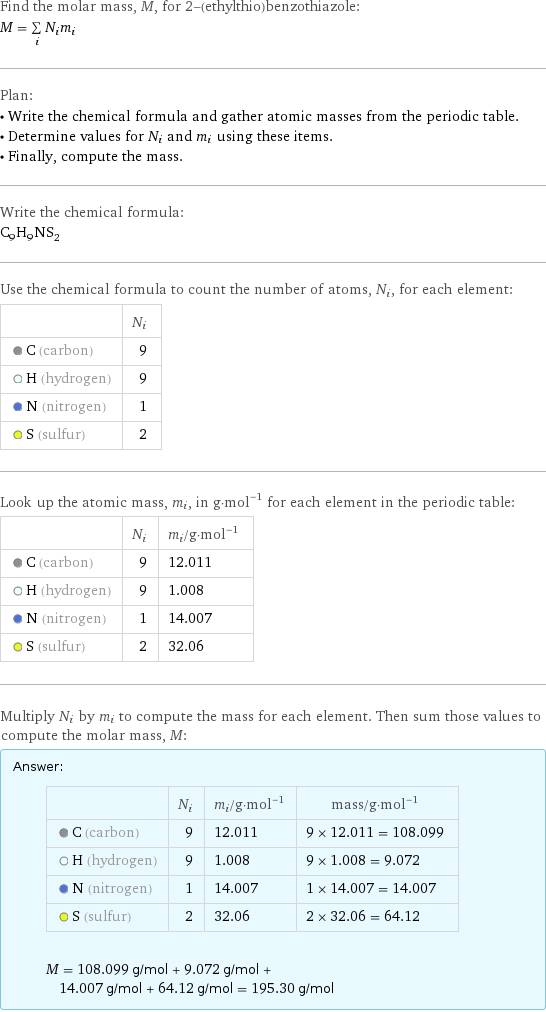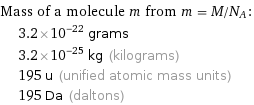Input interpretation

2-(ethylthio)benzothiazole | molar mass
Result

Find the molar mass, M, for 2-(ethylthio)benzothiazole: M = sum _iN_im_i Plan: • Write the chemical formula and gather atomic masses from the periodic table. • Determine values for N_i and m_i using these items. • Finally, compute the mass. Write the chemical formula: C_9H_9NS_2 Use the chemical formula to count the number of atoms, N_i, for each element: | N_i C (carbon) | 9 H (hydrogen) | 9 N (nitrogen) | 1 S (sulfur) | 2 Look up the atomic mass, m_i, in g·mol^(-1) for each element in the periodic table: | N_i | m_i/g·mol^(-1) C (carbon) | 9 | 12.011 H (hydrogen) | 9 | 1.008 N (nitrogen) | 1 | 14.007 S (sulfur) | 2 | 32.06 Multiply N_i by m_i to compute the mass for each element. Then sum those values to compute the molar mass, M: Answer: | | | N_i | m_i/g·mol^(-1) | mass/g·mol^(-1) C (carbon) | 9 | 12.011 | 9 × 12.011 = 108.099 H (hydrogen) | 9 | 1.008 | 9 × 1.008 = 9.072 N (nitrogen) | 1 | 14.007 | 1 × 14.007 = 14.007 S (sulfur) | 2 | 32.06 | 2 × 32.06 = 64.12 M = 108.099 g/mol + 9.072 g/mol + 14.007 g/mol + 64.12 g/mol = 195.30 g/mol
Unit conversion

0.1953 kg/mol (kilograms per mole)
Comparisons

≈ 0.27 × molar mass of fullerene ( ≈ 721 g/mol )

≈ 1.006 × molar mass of caffeine ( ≈ 194 g/mol )

≈ 3.3 × molar mass of sodium chloride ( ≈ 58 g/mol )
Corresponding quantities

Mass of a molecule m from m = M/N_A: | 3.2×10^-22 grams | 3.2×10^-25 kg (kilograms) | 195 u (unified atomic mass units) | 195 Da (daltons)

Relative molecular mass M_r from M_r = M_u/M: | 195